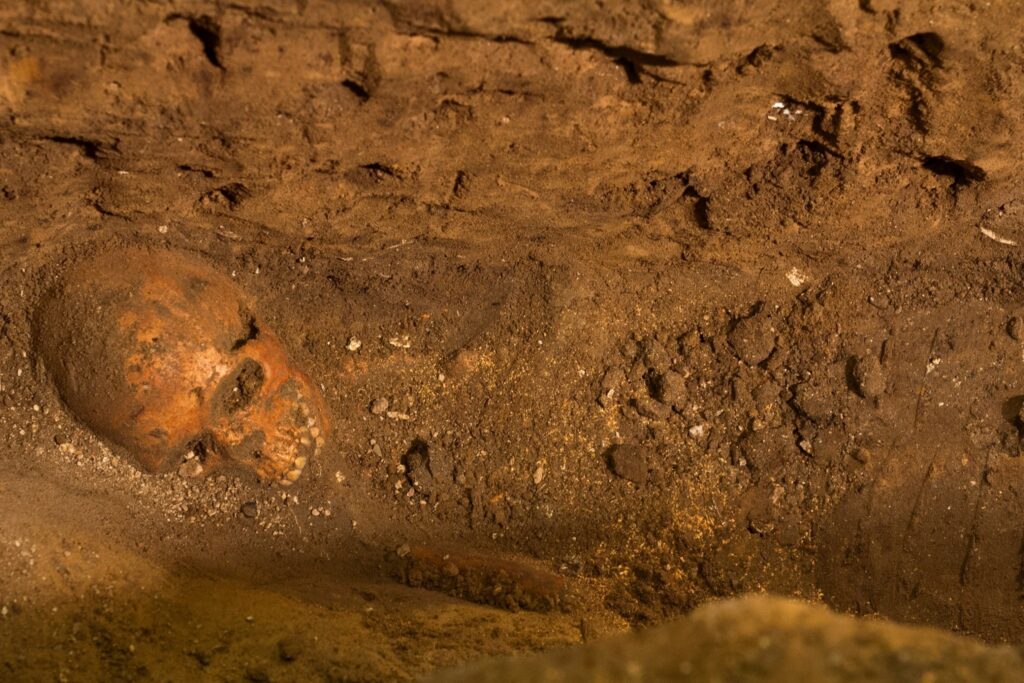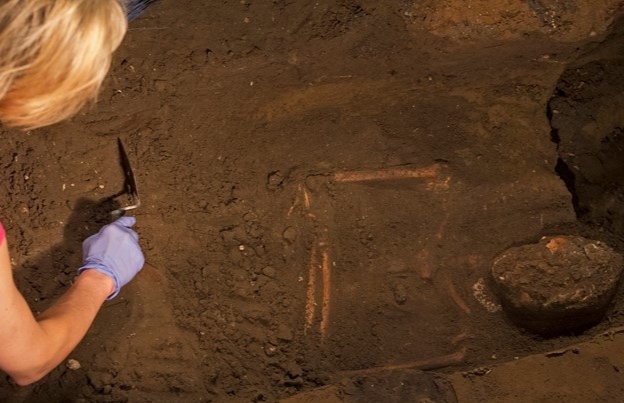A Remarkable Archaeological Discovery
A significant archaeological breakthrough in St. Augustine, Florida, has brought to light the skeletons of individuals who may have been among America’s earliest European settlers. This discovery, found beneath a wine shop in the country’s oldest city, offers an extraordinary glimpse into the lives of the first colonists in North America, enriching the historical narrative of St. Augustine and its role in early American history.

Discovery of the Skeletons
Recent excavations uncovered the skeletal remains of several individuals buried under the floor of a wine shop in St. Augustine. Among the seven individuals found were three children, and one of the skeletons was identified as a young white European woman. The remains, along with nearby pottery fragments, suggest that these individuals lived between the years 1572 and 1586. This period marks an early phase of European settlement in North America, just decades after the establishment of the Spanish colony of St. Augustine in 1565.

Historical Significance
Carl Halbirt, the city archaeologist of St. Augustine, described the find as a powerful connection to the city’s past. “What you’re dealing with is people who made St. Augustine what it is. You’re in total awe. You want to treat everything with respect, and we are,” he said. These remains likely belong to some of the first settlers in North America, offering invaluable insights into the lives of early colonists and their interactions with the indigenous populations and the environment. The discovery is an important piece in understanding the broader history of the European colonization of the Americas.

The Impact of Hurricane Matthew
The excavation itself was made possible by the damage caused by Hurricane Matthew in 2016. The hurricane’s flooding prompted the owner of the building to replace the wooden floor, exposing a layer of untouched soil beneath it. This preserved ground, effectively a time capsule, contained the ancient remains, allowing archaeologists to study and unearth these skeletons that had been buried for over four centuries.
Connection to the Ancient Church
The wine shop sits on the site of the historic Church of Nuestra Señora de la Remedios, which played a central role in the early colonial life of St. Augustine. According to architectural historian Ellsbeth Gordon, it was common for mission churches in Florida to bury the dead within the church floor, which was considered consecrated ground. The church itself had a tumultuous history, being burned down by Sir Francis Drake in 1586, destroyed by a hurricane in 1599, and later burned again by the British in 1702. Despite these disasters, the church remained a vital gathering place for the Spanish settlers and their mission in Florida, long before the Pilgrims landed at Plymouth Rock in 1620.

Preservation of the Remains
While the skeletons discovered beneath the wine shop will be moved to a nearby cemetery for preservation, the bones found within the shop’s walls will remain undisturbed. These remains have been resting in place for over 400 years, offering a direct link to the past. The careful preservation of these skeletal remains ensures that they continue to serve as a testament to the early history of St. Augustine and the broader story of early European settlement in North America.

Conclusion
The discovery of these ancient skeletons beneath a Florida wine shop has opened a window into America’s colonial past. These findings not only deepen our understanding of the first European settlers in North America but also highlight the historical significance of St. Augustine as the cradle of European colonization in the United States. As researchers continue to study these remains, more stories of the individuals who helped shape the early history of the United States will undoubtedly emerge, offering a richer, more nuanced understanding of this pivotal period in history.

